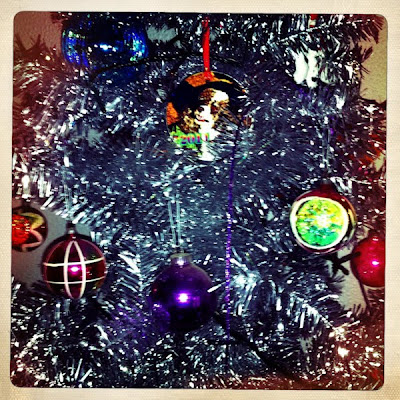© copyright Michael Werner
Saturday, December 31, 2011
Tuesday, December 27, 2011
Two Way Lens and Ellen Jantzen
Two Way Lens proudly presents Ellen Jantzen.
I am very happy and excited that Ellen Jantzen joined the amazing line up of outstanding photographers on Two Way Lens - Interviews with contemporary photographers.
Ellen Jantzen is a photographer and artist from St.Lois, Missouri and Los Angeles. Her work is included in many private and public collections and has been exhibited internationally. 2011 was just her year, she has won numerous awards, her work has been reviewed by international photography, art and design magazines and she got represented by a contemporary art gallery.
Ellen Jantzen's work is outstanding and unique. She combines two art forms, photography and digital art and creates images full of mystery and beauty.
Her most recent series is called Losing Reality; Reality of Loss
This is what Ellen writes about this series:
How does one experience loss? What does loss look like?
Catastrophic losses usually have a face; think war photos, photos from the World Trade Center, crashes of various sorts but I am interested in personal loss.
I have always been interested in alternate states of reality, the meaning of dreams, what becomes of our spirits after death (and before birth). We all deal with "loss" in some form, loss of friends, home, youth, and the ultimate loss, loss of life. Death transforms us; reality shifts, but to what?
I am intrigued with how a person adapts to losses in their lives; how they are absorbed by events and changed; how they experience loss. Do dreams influence the experience of loss? Are dreams real? I set about to address these issues through a photographic photosynthesis in this body of work; choosing photography as the medium to help me reveal reality while at the same time transform that reality to reflect loss.
In these images, I have placed my husband, Michael in various environments where a loss of some sort has recently occurred. Some of the losses were very specific and personal and some were of a general, universal nature reflected in an inner state of anguish and eventual acceptance.
More of Ellen's work can be found on her website
The interview with Two Way Lens can be found here.
 Inheritance, from the series Losing Reality; Reality of Loss
Inheritance, from the series Losing Reality; Reality of Loss© copyright al images Ellen Jantzen
Monday, December 26, 2011
Saturday, December 24, 2011
Friday, December 23, 2011
Happy Holidays
Tuesday, December 20, 2011
Saturday, December 10, 2011
Skewed Demographic - Exhibition and Benefit Auction
Skewed Demographic is an exhibition at the Queens Museum in New York City and a benefit auction.
This exhibition is on racial health disparity honoring Amit Gupta the founder of Photojojo and other Leukemia patients of South Asian heritage.
All auctioned works will benefit marrow donor registration in underrepresented communities.
See the show and buy work at the Queens Museum today on December 10th from 1 - 5 pm, or bid for the work of any of the photographers online until December 19th.
There's great photography to find, bid here and support this important case.

Wednesday, December 07, 2011
Giovanni Savino
Giovanni Savino is a New York based photographer specialized in editorial, documentary and portrait photography.
Besides his many professional assignments Giovanni is very passionate about a particular project he is working on.
The project is called Batey Dos. It is a photo reportage in one of the poorest Haitian immigrant settlements in the Dominican Republic: Batey numero dos (Batey two).
This is what Giovanni writes about his project:
Since the Haiti earthquake, the number of Haitian nationals illegally crossing the nearby border in search of work and better life conditions has greatly increased.
While not far from the riches and the modern lifestyle of a Dominican city, people here live on an average of ten dollars a day, six months of the year, the other six months, on zero income.
There is a local clinic, just two rooms and a cabinet full of aspirin, painkillers and condoms serving over 8000 Haitian workers.
There has been a great increase in eye problems and blindness amongst the workers because the sugar cane company uses weed killer.
Most of these people own nothing if not the ragged clothes they are wearing. They live in substandard housing, cement and zinc roof shacks built in the 1950’s, often up to 15 people in a room, sleeping amongst dirt, vermin and desperation.
Through this project Giovanni wants to make more people aware about the abysmal conditions these workers and their families live in and possibly become instrumental to bring some tangible help and relief to those very people.
The photographs below are from Batey Dos, they show the sensibility, the respect, the love and passion for the people and the perfect photographic skills Giovanni has gained over many, many years working as a professional photographer.

© copyright all images Giovanni Savino
Subscribe to:
Comments (Atom)









































